Muirneag SY486
1903-1947
Zulu-type Herring Drifter of Stornoway
in the Western Isles of Scotland
in the Western Isles of Scotland
An Exhibition-Quality Scale Model of Muirneag SY486,
Sandy MacLeod's 'Darling Girl'
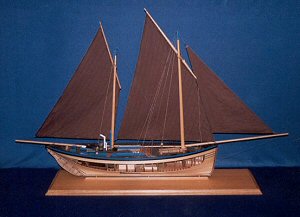
Monmouth, UK
 +44(0)7791 087 525
+44(0)7791 087 525
 email:
email:
 +44(0)7791 087 525
+44(0)7791 087 525
 email:
email:
Other Models
LE COUREUR
Le Coureur was a lugger (chasse marée) of the French Royal Navy, built by Denys de Dunkerque and launched in 1776. The lugger or chasse marée was the type favoured by French pirates of the Revolution period. On Tuesday 17th June 1778, while observing the British Channel Squadron in the English Channel, she was involved in the epic battle for which she is best remembered. In company with the French frigates La Poule and La Licorne she clashed with the Royal Navy Frigate HMS Arethusa and in particular the cutter HMS Alert, which ended in her capture after a fierce two-hour battle at pistol-range. Drawings (by John Henlow, dated 1778) are kept at the National Maritime Museum at Greenwich, of proposed modifications to the captured Le Coureur, for conversion to an 8-gun schooner. After conversion she was renamed Coureur. On 21st June 1780 she was captured during an engagement off Terranova (Newfoundland) by the American brigantines Fortune and Griffin (Griffin was herself taken later the same day by the British ship-sloop Fairy). Coureur's eventual fate is unknown.
The model shows her as she originally appeared with the French Royal Navy, and was built (with modifications) from the Mamoli kit, at 1:54 scale, overall length 820mm.
 top of page
top of page
In 1775 the American merchantman Wild Duck was converted to an armed brigantine, renamed USS Lexington, and became part of the Continental Navy prior to the war against England. On April 17 1776 she captured the sloop Edward, the first British ship to be captured at sea by the Colonists. Between July and September she took two British ships, Lady Susan, and Betsy. A few weeks later she left for Cape François, Haiti, and on the return voyage on 20th December she was overhauled by the British frigate Pearl near the Delaware Capes, and captured. Her American crew retook the ship from the British prize crew however, and took her to Baltimore.
She sailed for France on 17th February 1777, and in company with Reprisal and Dolphin between 18th and 22nd June captured fifteen vessels during a voyage around Ireland. On the 26th, after sighting the British 70-gun ship-of-the-line HMS Burford, the American ships scattered and made individually for the safety of France. Lexington was blockaded for several months by the Royal Navy at Morlaix, Brittany, but was ordered out on 12th September by the French under intense diplomatic pressure from Britain. She was caught in light winds off Ushant on 19th September by the British cutter Alert, and after a fierce battle and badly damaged, she ran out of ammunition and was forced to surrender. Her eventual fate is unclear.
The model was commissioned with a jury-rigged main topmast, apparently damaged in the encounter with Edward, and was modified from the Mamoli kit, at 1:100 scale, overall length 430mm.
 top of page
top of page
Endeavour was a 10-gun Royal Navy bark commanded by Lieutenant James Cook on his first voyage of discovery, to Australia and New Zealand in 1769-71. Launched in 1764 as the collier Earl of Pembroke, she was purchased by the Navy in 1768 (because of the strength of her hull) for a scientific mission to the Pacific Ocean, and to explore the seas for Terra Australis Incognita, the "unknown southern land". Refitted, renamed and commissioned as His Majesty's Bark the Endeavour, she departed Plymouth in August 1768, stopped at Tahiti in 1769, and crossed the mostly uncharted southern Pacific, reaching the coast of Australia (at a place they christened Botany Bay) in April 1770. She returned to Dover, England, on 12th July 1771 having been at sea for almost three years. Endeavour then slipped into obscurity, spending three years carrying supplies for the Royal Navy to the Falkland Islands. Renamed Lord Sandwich, she was sold into private hands in 1775. After a varied career she served briefly as a naval troop transport during the American Revolution, and (according to the latest research) was deliberately scuttled in a blockade of Narragansett Bay, Newport, Rhode Island, in 1778 apparently to prevent the landing of French troops for the Continental Army.
The model was built (with modifications) from the Caldercraft kit, at 1:64 scale, overall length 725mm.
 top of page
top of page
The model shows her as she originally appeared with the French Royal Navy, and was built (with modifications) from the Mamoli kit, at 1:54 scale, overall length 820mm.
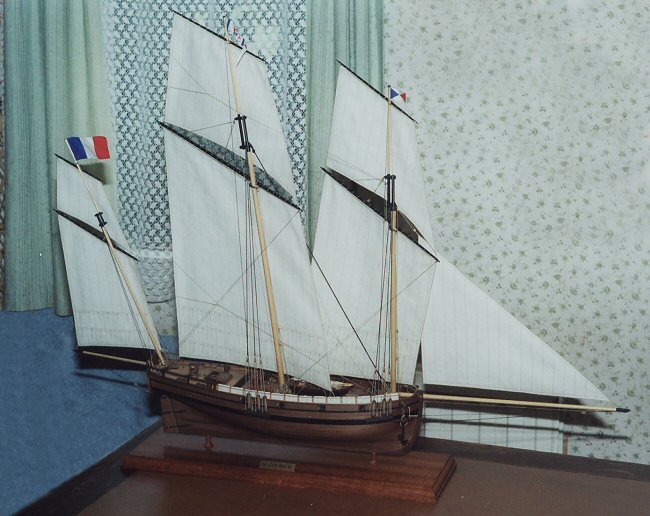
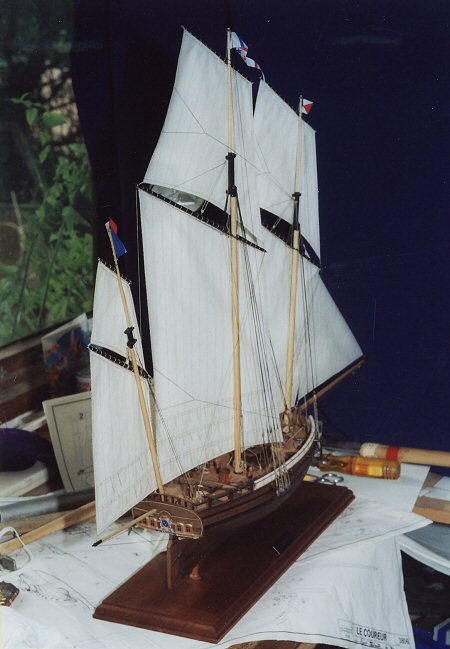
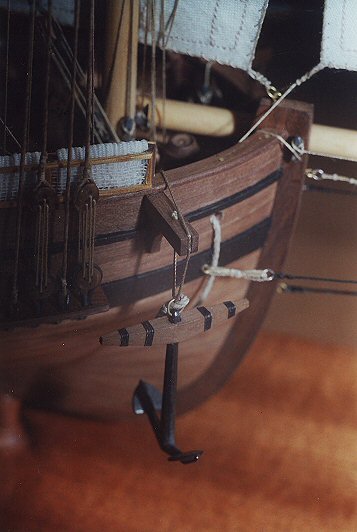
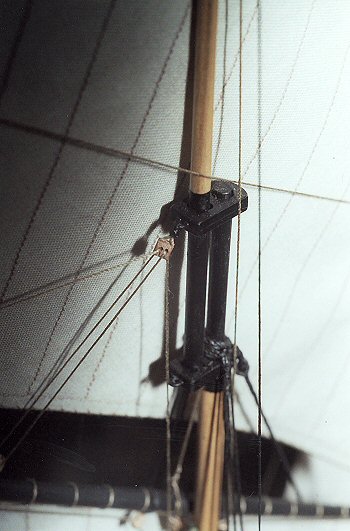
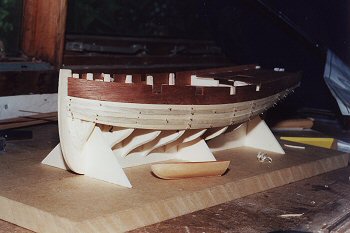
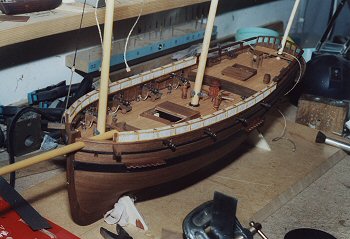
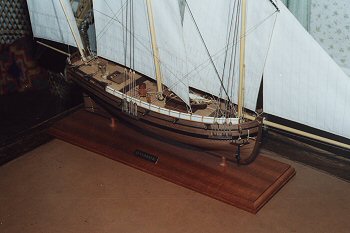
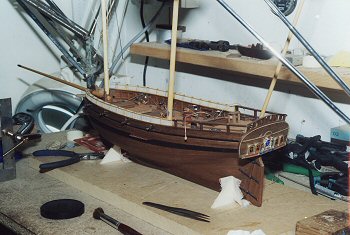
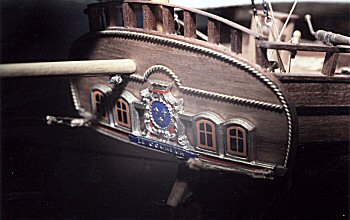
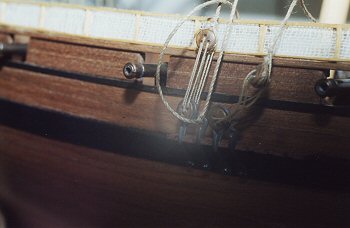
|
 top of page
top of page
USS LEXINGTON, 1775
In 1775 the American merchantman Wild Duck was converted to an armed brigantine, renamed USS Lexington, and became part of the Continental Navy prior to the war against England. On April 17 1776 she captured the sloop Edward, the first British ship to be captured at sea by the Colonists. Between July and September she took two British ships, Lady Susan, and Betsy. A few weeks later she left for Cape François, Haiti, and on the return voyage on 20th December she was overhauled by the British frigate Pearl near the Delaware Capes, and captured. Her American crew retook the ship from the British prize crew however, and took her to Baltimore.
She sailed for France on 17th February 1777, and in company with Reprisal and Dolphin between 18th and 22nd June captured fifteen vessels during a voyage around Ireland. On the 26th, after sighting the British 70-gun ship-of-the-line HMS Burford, the American ships scattered and made individually for the safety of France. Lexington was blockaded for several months by the Royal Navy at Morlaix, Brittany, but was ordered out on 12th September by the French under intense diplomatic pressure from Britain. She was caught in light winds off Ushant on 19th September by the British cutter Alert, and after a fierce battle and badly damaged, she ran out of ammunition and was forced to surrender. Her eventual fate is unclear.
The model was commissioned with a jury-rigged main topmast, apparently damaged in the encounter with Edward, and was modified from the Mamoli kit, at 1:100 scale, overall length 430mm.
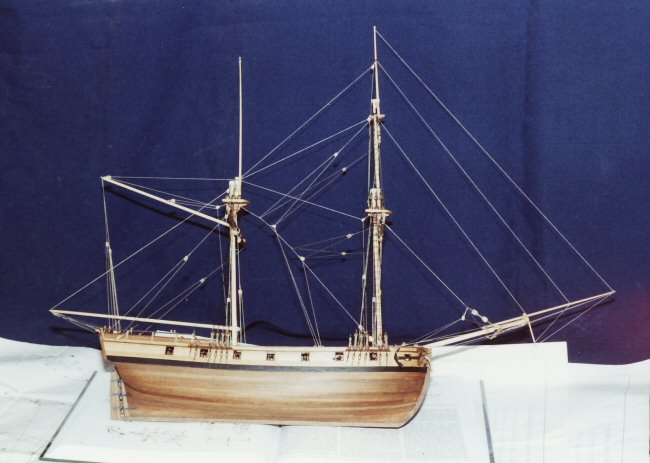
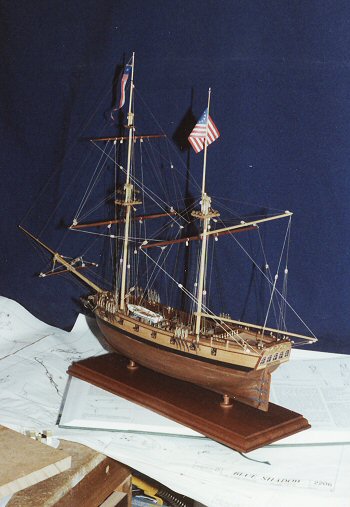
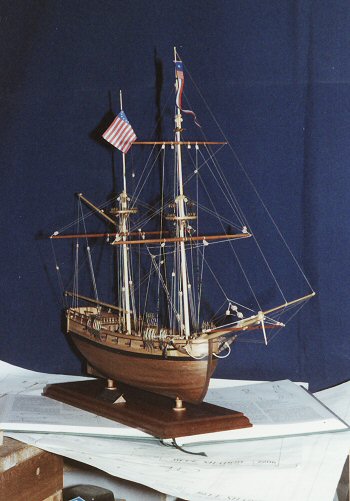
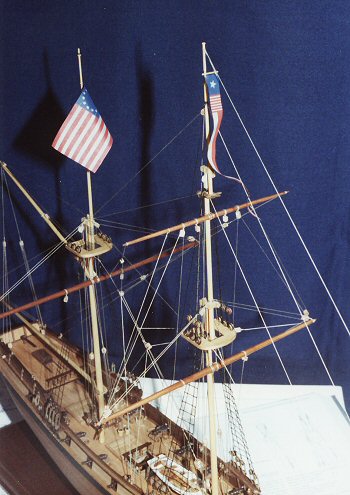
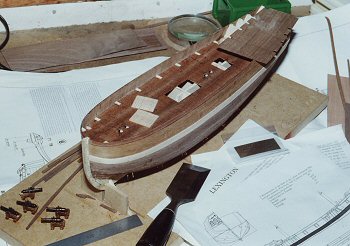
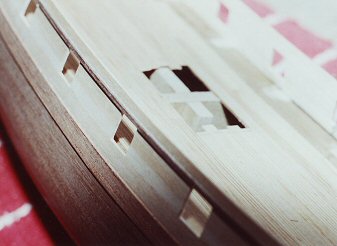
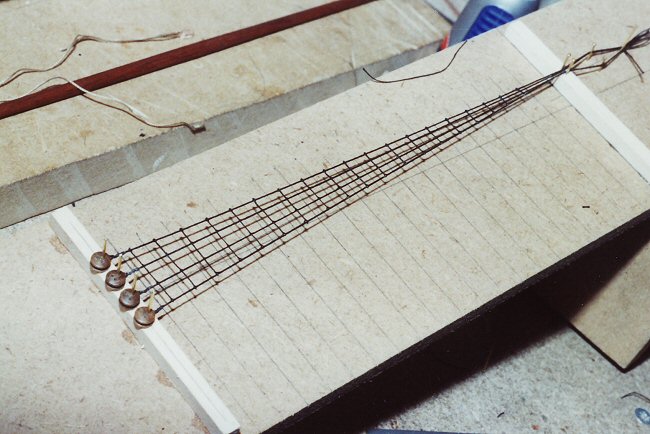
|
 top of page
top of page
HM Bark ENDEAVOUR
Endeavour was a 10-gun Royal Navy bark commanded by Lieutenant James Cook on his first voyage of discovery, to Australia and New Zealand in 1769-71. Launched in 1764 as the collier Earl of Pembroke, she was purchased by the Navy in 1768 (because of the strength of her hull) for a scientific mission to the Pacific Ocean, and to explore the seas for Terra Australis Incognita, the "unknown southern land". Refitted, renamed and commissioned as His Majesty's Bark the Endeavour, she departed Plymouth in August 1768, stopped at Tahiti in 1769, and crossed the mostly uncharted southern Pacific, reaching the coast of Australia (at a place they christened Botany Bay) in April 1770. She returned to Dover, England, on 12th July 1771 having been at sea for almost three years. Endeavour then slipped into obscurity, spending three years carrying supplies for the Royal Navy to the Falkland Islands. Renamed Lord Sandwich, she was sold into private hands in 1775. After a varied career she served briefly as a naval troop transport during the American Revolution, and (according to the latest research) was deliberately scuttled in a blockade of Narragansett Bay, Newport, Rhode Island, in 1778 apparently to prevent the landing of French troops for the Continental Army.
The model was built (with modifications) from the Caldercraft kit, at 1:64 scale, overall length 725mm.
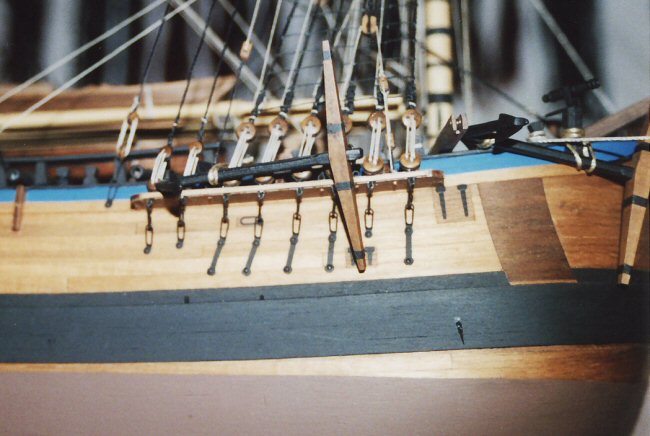
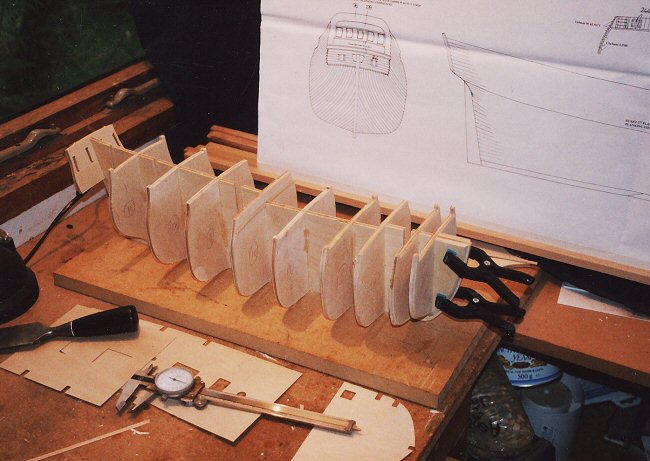
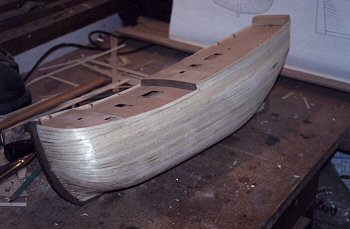
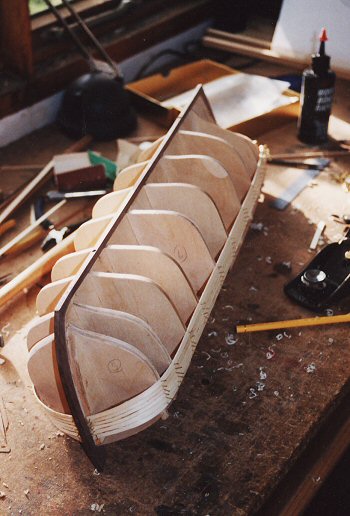
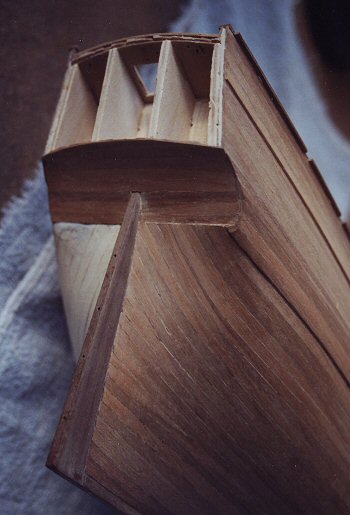
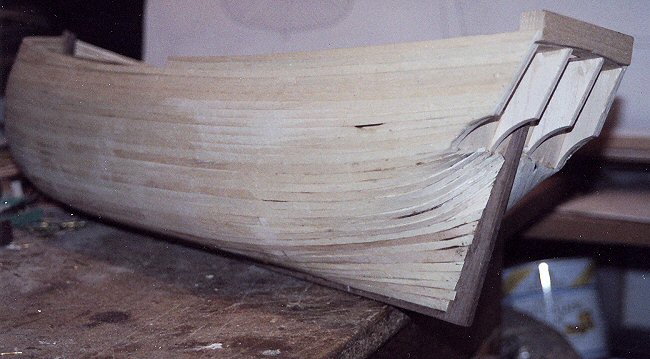
(First layer of hull planking almost completed, in Lime) 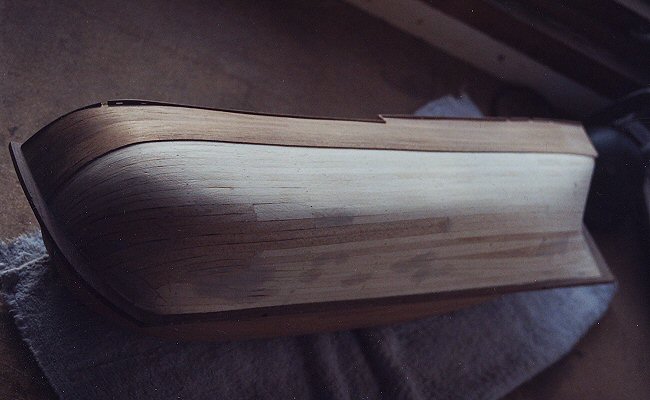
(Second layer of hull planking started, in Walnut) 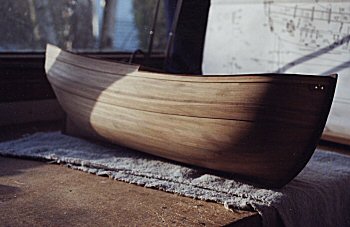
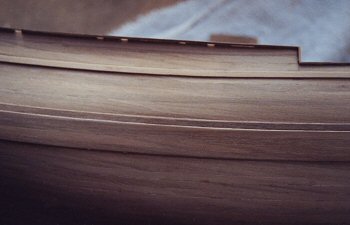
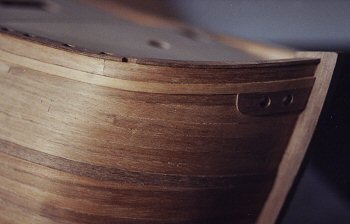
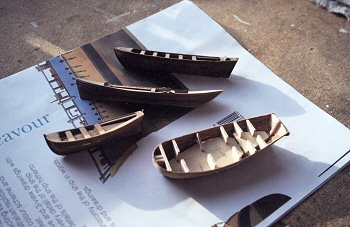
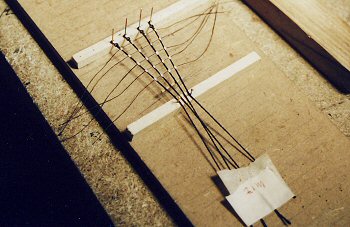
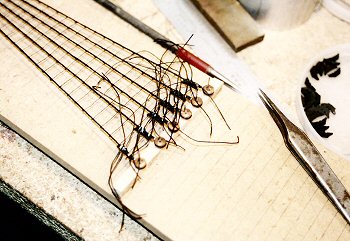
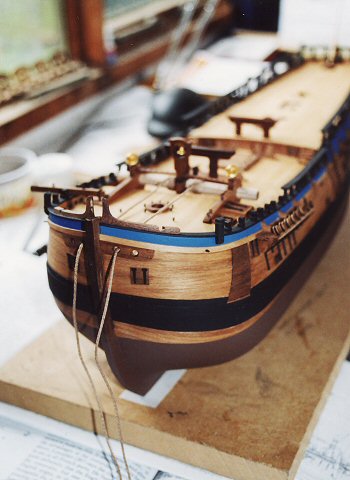
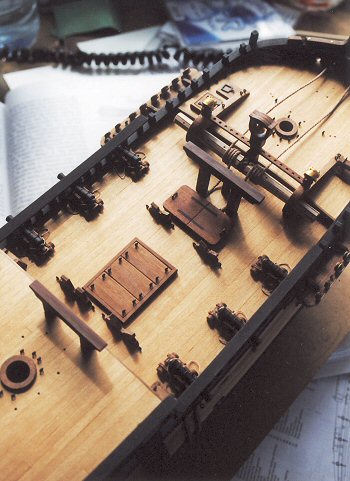
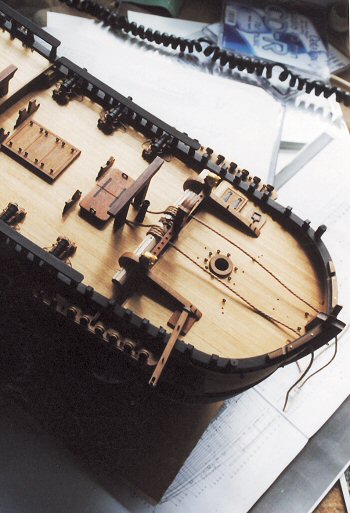
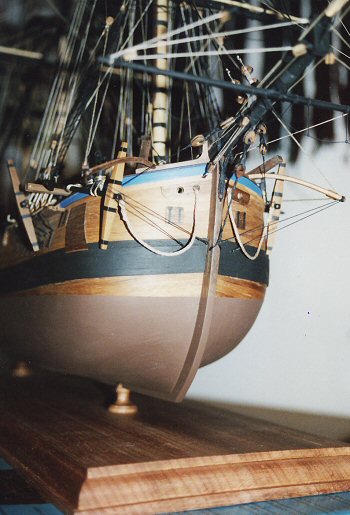
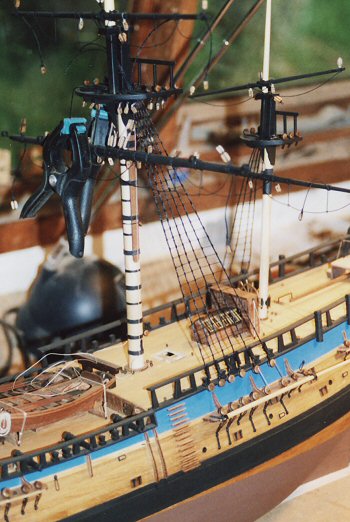
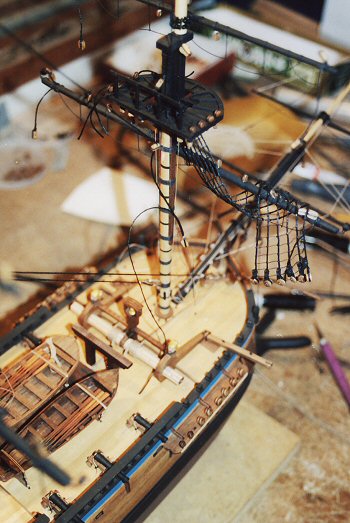
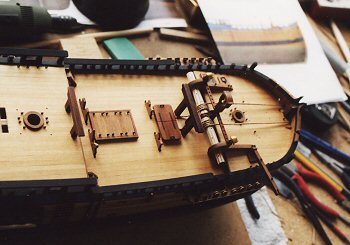
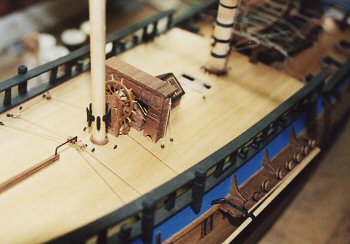
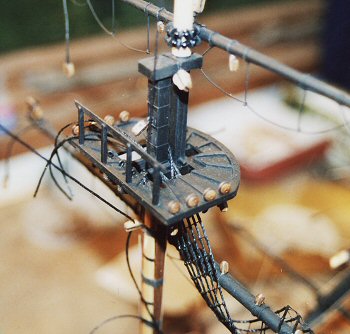
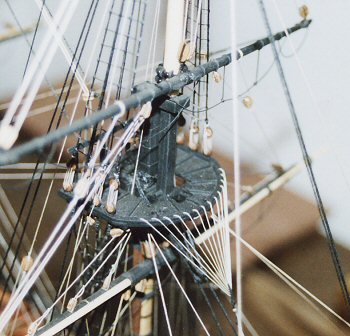
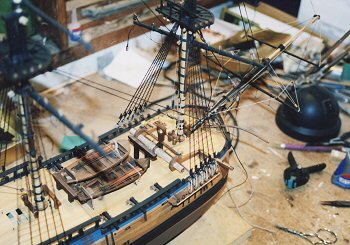
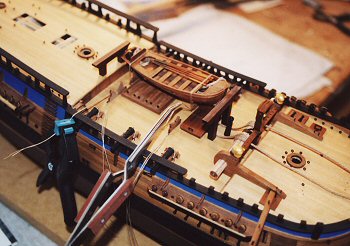
|
 top of page
top of page